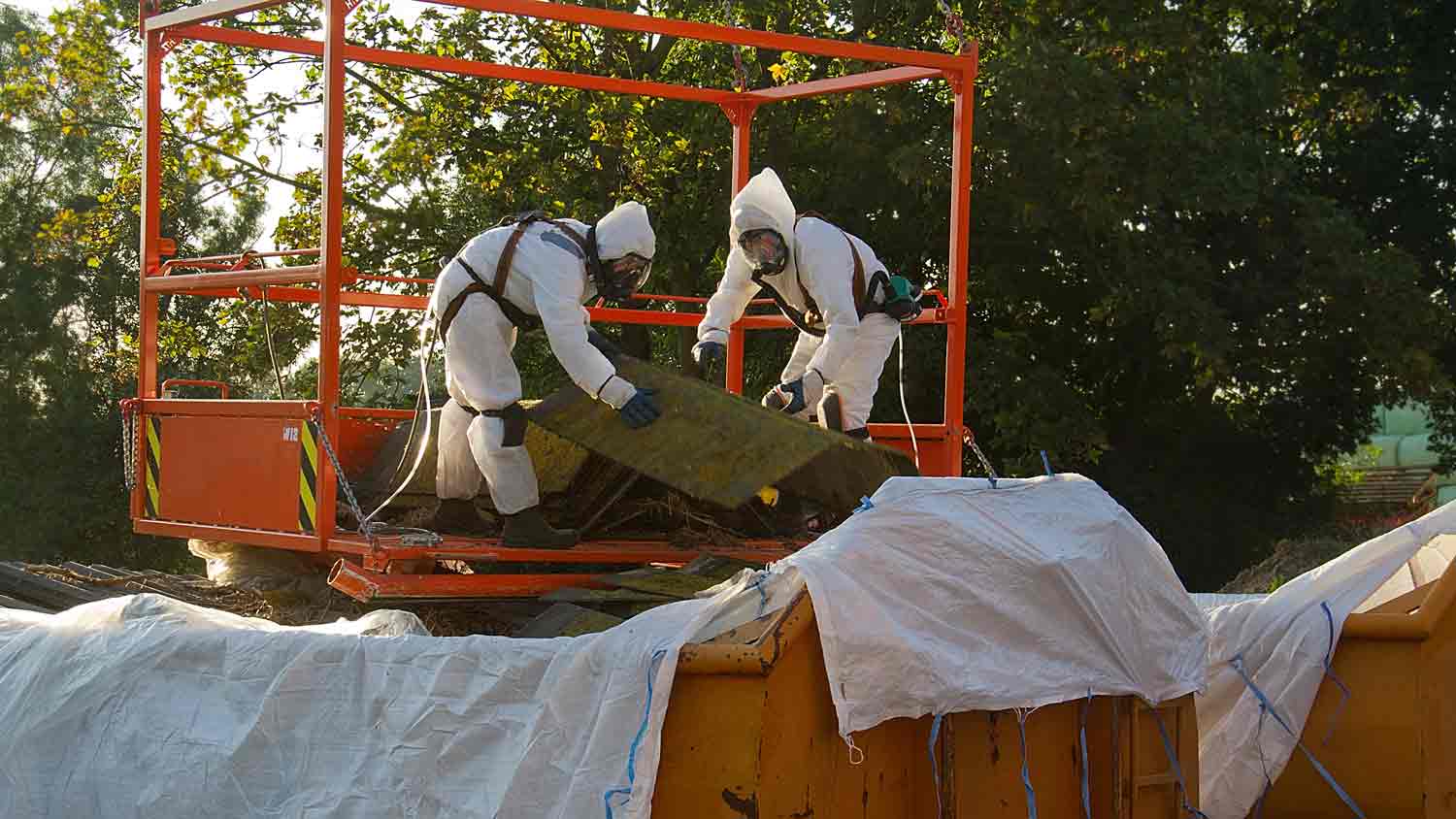
Check out how much an estate clean-out costs based on your location, the prep work required, your chosen company, and the cleanup fees.
TSDF workers safely handle hazardous waste disposal to protect health and the environment


TSDFs handle hazardous waste from receipt to final treatment or disposal, using trained processes that reduce environmental impact and protect health.
Hazardous waste disposal costs more than junk removal, ranging from $150 to $300, and varies by item and weight.
Pricing depends on waste type and whether fees are per pound or per item; dropping off waste yourself may lower the total.
Improper disposal can result in returned waste and fines up to $500, so confirm rules before using dumpsters or standard trash service.
This article was created using automation technology and thoroughly fact-checked and edited by HomeAdvisor Editor Ryan Noonan.
If you’re wondering who disposes of hazardous waste, the answer is Treatment, Storage, and Disposal Facilities (TSDFs). These facilities receive, treat, recycle, or safely dispose of hazardous materials using job-specific training and procedures that limit environmental impact.
Use this hiring guide to connect with trained TSDF workers, avoid DIY risks, and follow applicable health and safety practices.
Hiring TSDF workers is essential for safe, compliant hazardous waste disposal. Pros understand what is considered hazardous waste and how to handle each material. Their training and processes lower environmental impact and reduce risks to your health and safety. They also advise on the best way to transfer waste for disposal.
Here are some of the top benefits of working with a TSDF company:
They identify household items that are hazardous waste.
They select recycling, landfill, or incineration as appropriate.
They neutralize pollutants before disposal.
They protect groundwater and surface water during treatment.
They reduce fire, explosion, and exposure risks.
They follow trained handling and transport procedures.
They minimize environmental impact through proper treatment.
They advise on drop-off or scheduled pick-up.
Garbage removers do not dispose of hazardous waste. Standard garbage services handle large, non-hazardous items, while hazardous waste requires different handling and safety procedures. Improper disposal can cause fires or explosions.
Always verify your items with a removal service. If any are hazardous, contact a TSDF. Placing hazardous items in dumpsters can lead to returned waste and fines up to $500.
If you’re unsure how to handle or dispose of hazardous materials, hire a local removal service near you to ensure the job is done safely and in compliance with local regulations.
TSDFs manage hazardous waste from intake through treatment and final disposal, with chemical experts recommending methods that protect water sources. Depending on the material, waste is recycled, treated for safe disposal, or sent to secure landfills or incinerators.
Here’s a look at the standard process:
You drop off hazardous waste at a TSDF or schedule a pick-up.
Chemical experts determine the appropriate removal and treatment solution.
Workers apply solutions to neutralize pollutants and protect water sources.
Materials are recycled when possible or disposed of safely.
Remaining waste is placed in secure landfills or incinerators.
Hazardous waste disposal costs more than general junk removal, ranging from $150 to $300. Pricing varies by waste type and whether fees are charged per pound or per item. Costs for common items include batteries, electronics, chemicals, and appliances.
In some areas, dropping off materials yourself may reduce total disposal cost. Hazardous waste requires specialized disposal and recycling techniques to avoid fines of up to $500.
| Item | Cost Range |
|---|---|
| Batteries | $0.10–$10.25 per lb. |
| Electronics | $0.80–$1.50 per lb. |
| Household cleaners | $4 per lb. |
| Solvents | $0.80–$4 per lb. |
| Paints | $0.80–$3 per lb. |
From average costs to expert advice, get all the answers you need to get your job done.

Check out how much an estate clean-out costs based on your location, the prep work required, your chosen company, and the cleanup fees.

Want to put together a budget for removing unneeded furniture and mattresses? Here’s how to determine the cost based on labor costs, furniture type, amount, and size.

Budget for leaf removal costs based on factors such as yard size, removal method, service frequency, related yard tasks, disposal, and more.

Curious who hauls junk away? Learn which pros to call, junk removal costs, and dumpster rental options. Get clear steps to hire with confidence.

Discover who fixes garbage disposals. Learn whether to call an appliance repair pro, a plumber, or an electrician, and what each repair costs.

Find out who transports and disposes of asbestos waste. Learn which pros to hire, safety steps, and disposal costs to make a safe choice